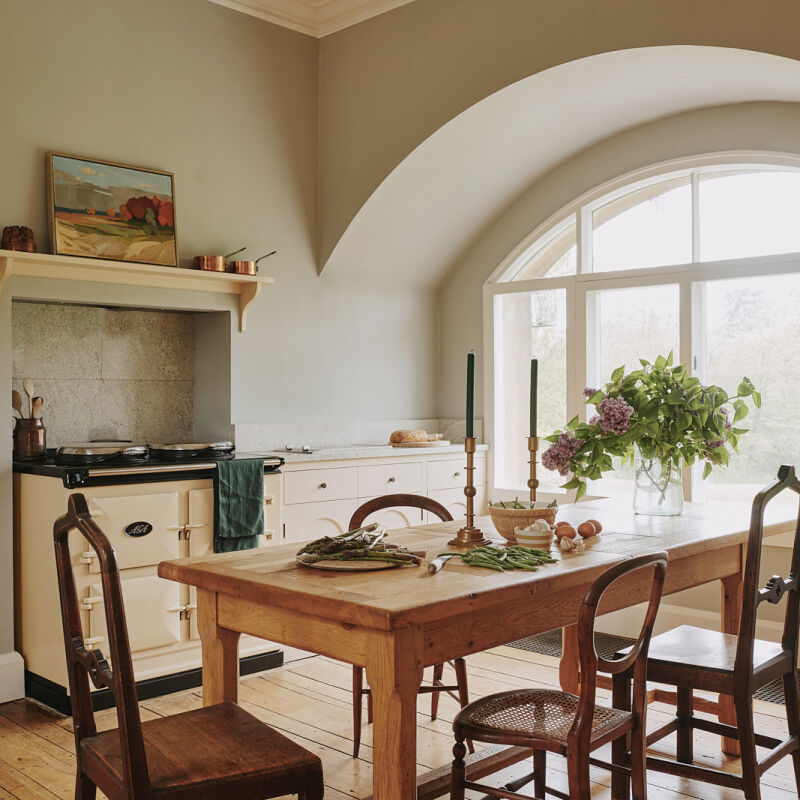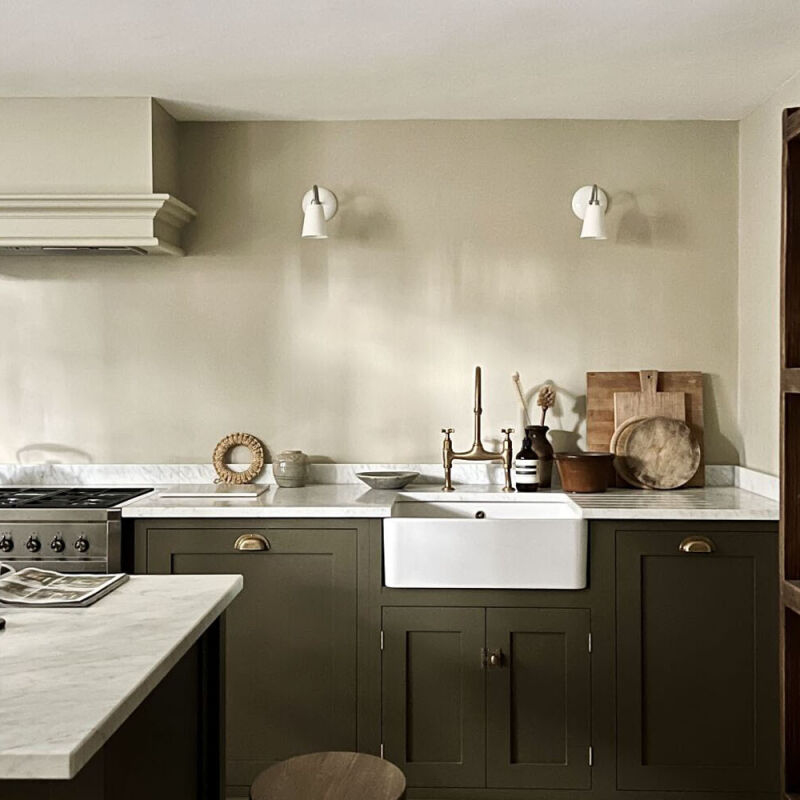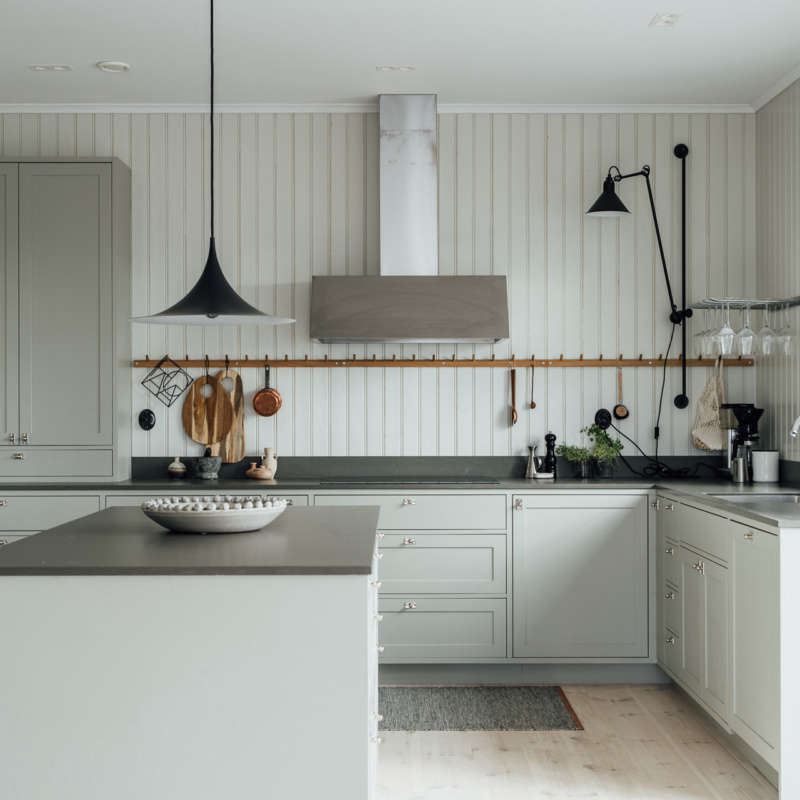Many of us spend our days surrounded by molding, the trim often used around windows, doors, and ceilings in interiors. But how much time do we spend thinking about it? Precious little, right? But the day may come when you actually need to know about molding, so let us give you a head start.
We decided to start with crown molding, a whole category unto itself. (We’ll circle back to other kinds of molding in a later post—stay tuned.) To find out the crucial points, we talked to architect James Dixon, a member of the Remodelista Architect & Designer Directory who specializes in restoring Manhattan apartments and building and renovating country houses. “I love moldings,” he says, “and I love what they can do for a room.” He insists he’s no moldings expert, but he has plenty of insider information that the layperson should know. Here’s the rundown.

What’s the difference between “molding” and “crown molding”?
“Molding” is a general term used for any type of trim inside a home, but ceiling molding generally falls under the term “crown molding.” (“Millwork,” on the other hand, refers to anything that’s been milled from wood—it can mean molding, baseboards, built-ins, cabinetry, and more.)
Does crown molding serve a function, or is it purely decorative?
Actually, crown molding was originally installed for practical reasons; only later did it become desired as a decorative element in a room—while still retaining its useful function. “The reason for trims and moldings in the first place was to cover gaps where different building materials came together,” says Dixon. “There’s always a space where walls and ceiling intersect, so someone thought, ‘Let’s just put a piece of wood there to cover the crack!’”
Over time, crown moldings became more and more elegant, and now, says Dixon, “we have this wonderful history of moldings.”

What are the other benefits of crown molding?
The original purpose still holds true: They clean up the space where walls and ceiling meet. But crown has become much more than that. “When it’s done right, crown molding helps lift the space, drawing your eye up to make the ceiling feel higher,” says Dixon. “It’s a lovely bit of detail that can bring out the faded grandeur in an old house while also hiding all sorts of sins—even distracting the eye from cobwebs or peeling paint.”
What is crown molding usually made of?
Several different materials are used today. Elaborately detailed crown moldings were traditionally made of plaster and still are. “Once you have the plaster mold, you can keep repeating the pattern; it’s much harder to do the same with wood,” says Dixon. These days you can consult catalogs to find the design that works for your space; the company will create the plaster molding onsite. You can also restore an old plaster crown by having a mold made of the pattern, and new pieces crafted from that to replace the damaged sections.
Wood can also be a good material for crown molding, says Dixon. “It’s easier than plaster to install and maintain, and you don’t have as many issues with cracking.”
Crown molding made of a composite—such as polyurethane foam, extruded polystyrene, vinyl, or PVC—is by far the easiest to install. These moldings, whose patterns are modeled after traditional plaster styles, are lightweight, flexible, and impervious to moisture and insects. “You can get really satisfactory results, and once it’s painted it’s very hard to tell the difference,” says Dixon.

How much does crown molding cost?
With so many choices available, Dixon says that prices are hard to estimate. The least expensive options are those made of composite; Home Depot carries a huge range. “As for wood, there are so many types the cost differential can be pretty dramatic. Plaster is always the most expensive, because of the labor and level of detail.”

What styles of crown molding are available?
“There are entire catalogs devoted to the different looks for various architectural styles, some much fancier than others,” says Dixon. You’ll find Greek Revival, Classic Colonial, Arts & Crafts, and many more; perhaps you’d prefer the look of a historic French chateau or Victorian mansion. Dixon himself loves moldings from the 1940s, when rooms started getting more modern and molding became flatter, with less detail. “So sleek and elegant,” he says.
What are the current trends in crown molding?
So many, Dixon can’t keep track of them. He does like to see people experimenting with materials. “The great thing is if you install it and then think, ‘This doesn’t really work,’ you can redo it in a couple of years.”
But what Dixon really admires is the persistent tradition of historically appropriate molding. “It’s wonderful that there are still craftspeople who can do these beautiful plaster installations.”

How do I choose what type of crown molding to use?
We asked Dixon how to know what size and type of crown molding to use where, but “there are whole bibles to determine the exact proportions that fit the size of the room, ceiling height, and more,” he says. (Among them: C. Howard Walker’s 1926 Theory of Mouldings, part of the Classical America Series in Art and Architecture.) “The thing is, you need to understand the rules before you can start playing around with them,” he adds.
But there are still opportunities to be creative. For example, an elaborate crown might be a fun trick in a tiny powder room, drawing the eye up to distract from the fact that the room is very small. But usually, a heavy crown in a small room will only feel oppressive.
In general, low ceilings shouldn’t rule out crown moldings. “If you do something very simple and it draws your eye up, it can make the ceiling appear taller. I encourage people to keep it simple; ornate is just a distraction.”
Dixon also prefers to see molding of the appropriate era. “If you’re in a simple fifties-style apartment, you don’t want Louis XV gilded molding,” he tactfully suggests.

How do I choose a paint color for crown molding?
Paint color can really make a difference in how the high the ceiling feels. “Making the crown molding the same color as the walls can lift up the ceiling,” says Dixon. The molding could also match the ceiling—or even be painted a shade that’s different from either the walls or ceiling. “If you’re in a house that’s seen better days but still has beautiful moldings, you could paint them fun colors to distract from other shortcomings.” (For a few tried-and-true suggestions for molding colors, see our post Expert Advice: Three No-Fail Color Palettes for Walls, Ceiling, and Trim.)
I’ve moved into a place with crown molding. Can I get rid of it?
Fans of modern architecture often want to dispense with molding altogether. “Molding is there for a reason,” Dixon reminds us. “It can be difficult and very expensive to detail a room without any molding to hide those little defects that naturally occur, such as cracking around the ceiling and windows.” Be aware that removing it might reveal imperfections in the construction.

I want to remove my crown molding anyway. What should I know?
That depends on when the molding was installed. “Let’s say you decide to take out the original plaster molding from a turn-of-the-century brownstone,” says Dixon. “You’re in for a lot of work, and it’ll be complicated and expensive to repair the mess left behind.” If it’s just a molding somebody added in the 1980s to groove up the place, he says, that should be a pretty simple job. But again: Moldings are there for a reason. Chances are, you’ll need to install fresh crown molding anyway to keep that wall and ceiling juncture looking tidy.
Remodeling projects large and small come with lots of forks in the road. What kind of flooring to get? Single- or double-bowl sink? What kinds of cabinets will withstand the test of time? We can help narrow the options. Take a look at our posts:
- Remodeling 101: A Guide to the Only 7 Types of Tile You Need to Know
- Remodeling 101: Single-Bowl Vs. Double-Bowl Sinks in the Kitchen
- Remodeling 101: A Guide to the Only 6 Kitchen Cabinet Styles You Need to Know
Frequently asked questions
What is crown molding?
Crown molding refers to a decorative trim that is installed where the walls and ceiling meet. It adds a finishing touch and enhances the aesthetic appeal of a room. Crown molding comes in various styles and sizes, allowing for customization to match different architectural and design preferences.
What are the benefits of using crown molding in a space?
Crown molding can bring several benefits to a space. It adds elegance and visual interest to a room, making it feel more finished and refined. It can also help cover up imperfections or transitions between walls and ceilings. Additionally, crown molding can create the illusion of higher ceilings and add architectural character to the space.
What are the different styles of crown molding available?
There is a wide range of crown molding styles available to suit different design aesthetics. Common styles include traditional, modern, colonial, Victorian, and Craftsman, among others. The choice of style depends on the overall design theme and architectural elements of the space.
What materials are commonly used for crown molding?
Crown molding can be made from various materials, including wood, plaster, polyurethane, and composite materials. Wood is a popular choice for its natural beauty and versatility, while plaster offers a classic and traditional look. Polyurethane and composite materials are more durable and often easier to install.
Can crown molding be installed in any room?
Crown molding can be installed in most rooms, including living rooms, dining rooms, bedrooms, and even kitchens and bathrooms. It can add a touch of sophistication and architectural detail to any space. However, it's important to consider the ceiling height, style of the room, and overall design scheme when choosing crown molding.
Is crown molding a DIY-friendly project?
Installing crown molding can be a DIY project for those with some carpentry skills and experience. However, it does require precise measurements, cutting, and fitting, as well as the use of specialized tools. If you're unsure about your abilities, it's advisable to consult a professional carpenter or installer.
How is crown molding installed?
Crown molding is typically installed using nails or adhesive. It's important to accurately measure and cut the molding to fit the room's dimensions and corners. The molding is then secured to the wall and ceiling, with additional support from wood blocking or braces if necessary. Fillers and caulk are used to hide any gaps or imperfections.






Have a Question or Comment About This Post?
Join the conversation